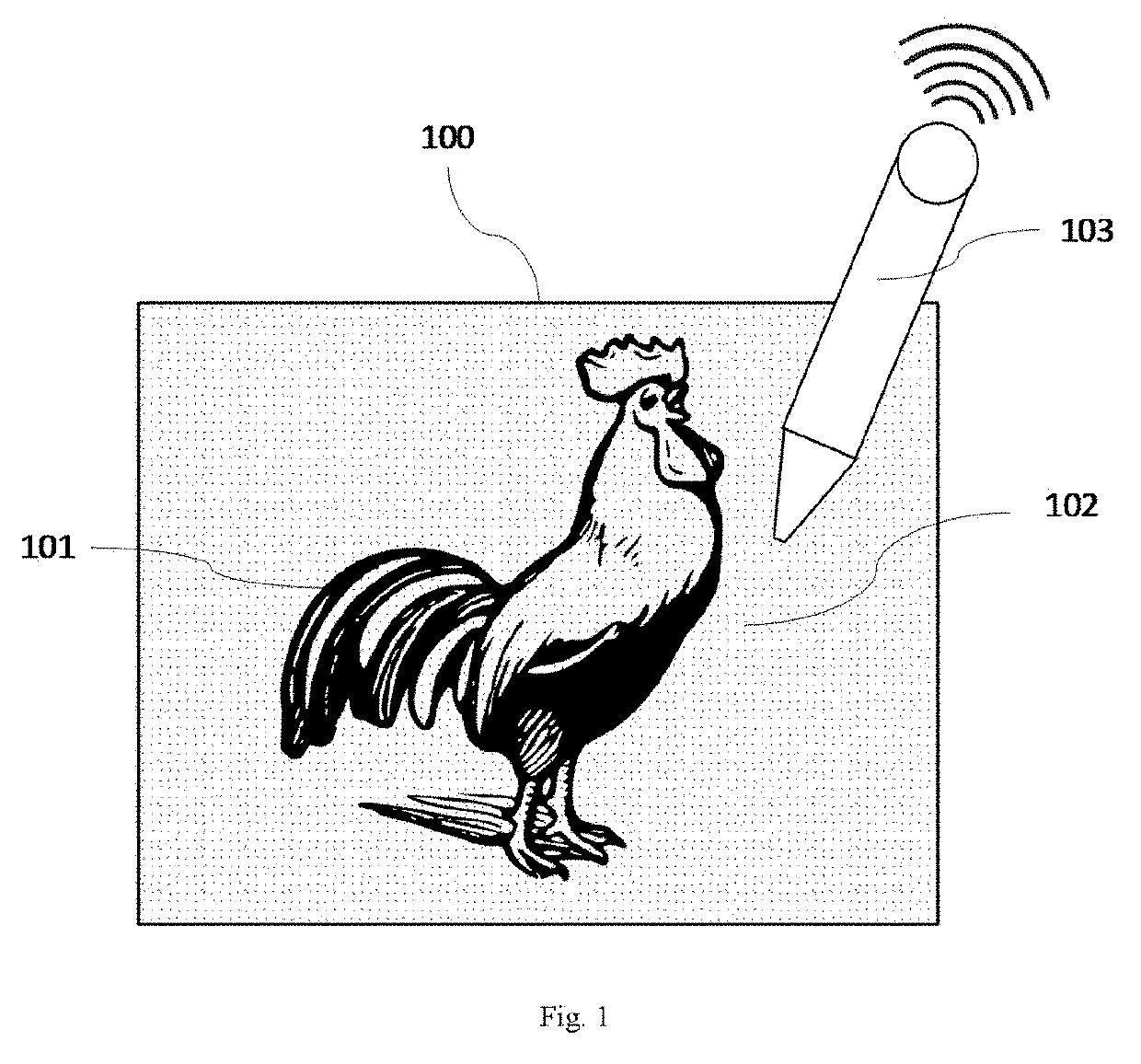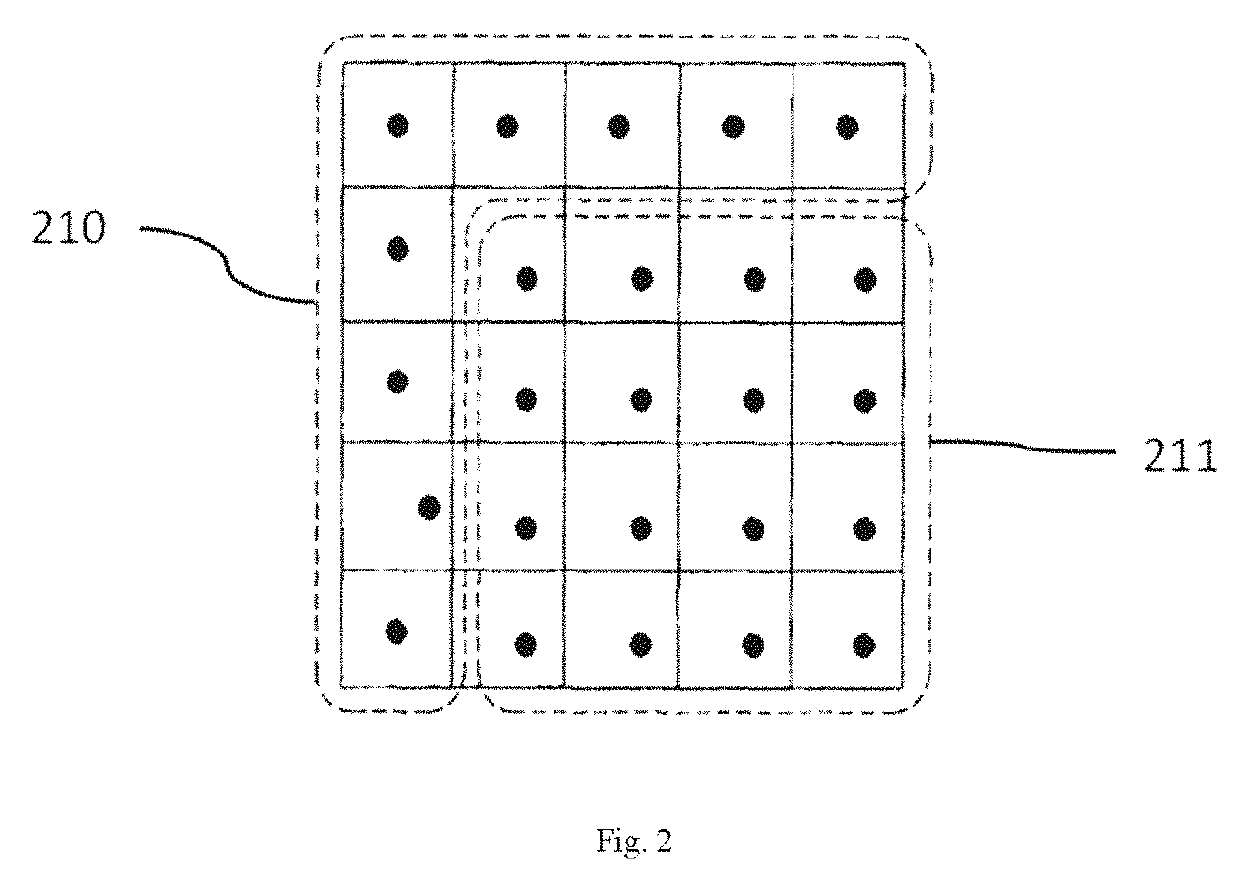Two-dimensional dot matrix barcode encoding and identifying methods
a two-dimensional dot matrix and barcode technology, applied in the field of image identification, can solve the problems of boring acquisition of information, visual fatigue, blind people or people with eye diseases, and cannot read this traditional publication, so as to facilitate identification, reduce identification errors, and increase identification speed
- Summary
- Abstract
- Description
- Claims
- Application Information
AI Technical Summary
Benefits of technology
Problems solved by technology
Method used
Image
Examples
embodiment 1
[0068]As shown in FIG. 4 to FIG. 9, a two-dimensional dot matrix barcode encoding method is provided. A two-dimensional dot matrix barcode 701 is composed of 6×6 virtual code point storage blocks 400. Nine coordinate calibration blocks 720, 25 data storage blocks 730, a first indication block 7101 and a second indication block 7102 are formed by filling code points 500 into the virtual code point storage blocks 400 respectively.
[0069]Code points 500 filled in the coordinate calibration block 720 are located in the centers of the virtual code point storage block 400.
[0070]A direction and coordinate indication set 710 indicative of a direction and a coordinate is formed by means of a combination of the first indication block 7101 and the second indication block 7102, the second indication block 7102 is the virtual code point storage block 400 without the code point 500, and the first indication block 7101 is filled, in the center, with a code point.
[0071]The plurality of coordinate ca...
embodiment 2
[0080]The embodiment is used to identify the two-dimensional dot matrix barcode described above. As shown in FIG. 11, it is an enlarged view of a two-dimensional dot matrix barcode storing 25 octal numbers “0123456701234567012345670”. Mesh lines in the figure are only used to assist human eyes in observation. Under 600 DPI printing conditions, a two-dimensional dot matrix barcode of an original size shown in FIG. 11 occupies an area of about 1.778 mm×1.778 mm, a target area readable by an electronic device 103 is usually much larger than the area of a single two-dimensional dot matrix barcode, and a readable target area is filled with the same two-dimensional dot matrix barcode by seamless tiling during printing.
[0081]Decoding flow: as shown in FIG. 12, a grayscale image greater than or equal to a two-dimensional dot matrix barcode is acquired, the grayscale image including at least one direction and coordinate indication set and a plurality of coordinate calibration blocks; an opti...
PUM
 Login to View More
Login to View More Abstract
Description
Claims
Application Information
 Login to View More
Login to View More - R&D
- Intellectual Property
- Life Sciences
- Materials
- Tech Scout
- Unparalleled Data Quality
- Higher Quality Content
- 60% Fewer Hallucinations
Browse by: Latest US Patents, China's latest patents, Technical Efficacy Thesaurus, Application Domain, Technology Topic, Popular Technical Reports.
© 2025 PatSnap. All rights reserved.Legal|Privacy policy|Modern Slavery Act Transparency Statement|Sitemap|About US| Contact US: help@patsnap.com



